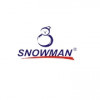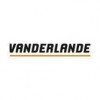Filter interviews by
Snowman Logistics Interview Questions and Answers
8 Interview questions
Suction pressure refers to the pressure in a system drawing fluid, while oil pressure indicates the pressure of oil in a lubrication system.
Suction pressure is critical in systems like pumps, where it helps draw fluid into the pump.
Oil pressure is vital in engines, ensuring proper lubrication and preventing wear.
For example, a low suction pressure can lead to cavitation in pumps, while low oil pressure can cause e...
Discharge temperature varies by equipment; typically, it should be maintained below 200°F for safety and efficiency.
Standard discharge temperatures for HVAC systems range from 85°F to 140°F.
In refrigeration, maintaining discharge temperatures below 200°F prevents compressor damage.
For steam systems, discharge temperatures should be monitored to avoid overheating and ensure safety.
Maintaining discharge pressure ensures optimal system performance and safety in various applications, including HVAC and industrial processes.
Discharge pressure is the pressure at which fluid exits a system, crucial for efficiency.
Regular monitoring helps prevent equipment failure; for example, in compressors, low pressure can indicate leaks.
Adjustments may be needed based on system demands; for instance, in HVAC ...
Refrigeration system works on the principle of removing heat from a low-temperature reservoir and transferring it to a high-temperature reservoir.
The refrigeration cycle involves four main components: compressor, condenser, expansion valve, and evaporator.
The compressor compresses the refrigerant gas, raising its temperature and pressure.
The high-pressure gas then flows to the condenser, where it releases heat and...
The expansion valve controls the flow of refrigerant in a cooling system.
The expansion valve is a crucial component in refrigeration and air conditioning systems.
It is responsible for regulating the flow of refrigerant from the high-pressure side to the low-pressure side of the system.
The valve works by creating a pressure drop, which causes the refrigerant to expand and cool down.
This cooled refrigerant then abso...
Refrigeration cycle is a process of removing heat from a low-temperature reservoir and transferring it to a high-temperature reservoir.
The cycle consists of four main components: compressor, condenser, expansion valve, and evaporator.
The refrigerant is compressed by the compressor and then condensed in the condenser, releasing heat.
The high-pressure refrigerant then passes through the expansion valve, where it exp...
A relay is an electrically operated switch that uses an electromagnet to mechanically open or close a circuit.
Relays are used to control high voltage or high current circuits with low voltage signals.
They are commonly used in industrial automation, automotive applications, and household appliances.
Relays can be classified into different types based on their construction and operating principles.
Some common types o...
Condenser and economizer are used in HVAC systems to increase efficiency and reduce energy consumption.
Condenser is used to remove heat from the refrigerant and convert it from a gas to a liquid state.
Economizer is used to pre-cool the air entering the HVAC system, reducing the load on the cooling system.
Both components help to increase the efficiency of the HVAC system and reduce energy consumption.
Examples of HV...
Snowman Logistics Interview Experiences
9 interviews found
I appeared for an interview in May 2025, where I was asked the following questions.
- Q1. Journal entries
- Q2. Few accounts question
I applied via Company Website and was interviewed in Aug 2024. There was 1 interview round.
(2 Questions)
- Q1. You are working location and Company
- Q2. What expect your salary
- Ans.
I expect a competitive salary based on my experience, skills, and the responsibilities of the role.
I am looking for a salary that reflects my qualifications and the value I can bring to the company.
I have researched the average salary range for Senior Maintenance Executives in this industry.
I am open to negotiation based on the overall compensation package offered.
I am seeking a salary that aligns with my career goals ...
Interview Preparation Tips
(1 Question)
- Q1. Related to data analytics
I applied via Walk-in and was interviewed in Mar 2024. There were 2 interview rounds.
(2 Questions)
- Q1. Education qualification, about myself
- Q2. Working experience, working procedure
How to smoothly work
I applied via LinkedIn and was interviewed in Jun 2024. There was 1 interview round.
(2 Questions)
- Q1. All opration handling
- Q2. Logisitcs &opration manpawer outward &inward handling
Interview Preparation Tips
I appeared for an interview before Mar 2024, where I was asked the following questions.
- Q1. What is the maintaining discharge pressure
- Ans.
Maintaining discharge pressure ensures optimal system performance and safety in various applications, including HVAC and industrial processes.
Discharge pressure is the pressure at which fluid exits a system, crucial for efficiency.
Regular monitoring helps prevent equipment failure; for example, in compressors, low pressure can indicate leaks.
Adjustments may be needed based on system demands; for instance, in HVAC syste...
- Q2. How much discharge temp we can maintane
- Ans.
Discharge temperature varies by equipment; typically, it should be maintained below 200°F for safety and efficiency.
Standard discharge temperatures for HVAC systems range from 85°F to 140°F.
In refrigeration, maintaining discharge temperatures below 200°F prevents compressor damage.
For steam systems, discharge temperatures should be monitored to avoid overheating and ensure safety.
- Q3. Difference between suctin pressure and oil pressure
- Ans.
Suction pressure refers to the pressure in a system drawing fluid, while oil pressure indicates the pressure of oil in a lubrication system.
Suction pressure is critical in systems like pumps, where it helps draw fluid into the pump.
Oil pressure is vital in engines, ensuring proper lubrication and preventing wear.
For example, a low suction pressure can lead to cavitation in pumps, while low oil pressure can cause engine...
(3 Questions)
- Q1. Explain refrigeration cycle
- Ans.
Refrigeration cycle is a process of removing heat from a low-temperature reservoir and transferring it to a high-temperature reservoir.
The cycle consists of four main components: compressor, condenser, expansion valve, and evaporator.
The refrigerant is compressed by the compressor and then condensed in the condenser, releasing heat.
The high-pressure refrigerant then passes through the expansion valve, where it expands ...
- Q2. Purpose of condenser, economizer
- Ans.
Condenser and economizer are used in HVAC systems to increase efficiency and reduce energy consumption.
Condenser is used to remove heat from the refrigerant and convert it from a gas to a liquid state.
Economizer is used to pre-cool the air entering the HVAC system, reducing the load on the cooling system.
Both components help to increase the efficiency of the HVAC system and reduce energy consumption.
Examples of HVAC sy...
- Q3. Working principle of relay
- Ans.
A relay is an electrically operated switch that uses an electromagnet to mechanically open or close a circuit.
Relays are used to control high voltage or high current circuits with low voltage signals.
They are commonly used in industrial automation, automotive applications, and household appliances.
Relays can be classified into different types based on their construction and operating principles.
Some common types of rel...
Interview Preparation Tips
I applied via Campus Placement and was interviewed before Mar 2022. There were 2 interview rounds.

(2 Questions)
- Q1. Basic refrigeration system
- Q2. Work principle of refrigeration system
- Ans.
Refrigeration system works on the principle of removing heat from a low-temperature reservoir and transferring it to a high-temperature reservoir.
The refrigeration cycle involves four main components: compressor, condenser, expansion valve, and evaporator.
The compressor compresses the refrigerant gas, raising its temperature and pressure.
The high-pressure gas then flows to the condenser, where it releases heat and cond...
Interview Preparation Tips
- Refrigeration system
I applied via Approached by Company and was interviewed before Jun 2021. There was 1 interview round.
(1 Question)
- Q1. How expansion valve functioning
- Ans.
The expansion valve controls the flow of refrigerant in a cooling system.
The expansion valve is a crucial component in refrigeration and air conditioning systems.
It is responsible for regulating the flow of refrigerant from the high-pressure side to the low-pressure side of the system.
The valve works by creating a pressure drop, which causes the refrigerant to expand and cool down.
This cooled refrigerant then absorbs h...
Interview Preparation Tips
Top trending discussions






Interview questions from similar companies

Assistant Manager Interview Questions & Answers
DSV - Global Transport and Logisticsposted on 20 Mar 2022
I applied via Approached by Company and was interviewed before Mar 2021. There were 2 interview rounds.
(4 Questions)
- Q1. Tell me about yourself.
- Q2. Share details of your previous job.
- Q3. Why are you looking for a change?
- Q4. What is your family background?
- Ans.
My family background is diverse and has shaped me into a well-rounded individual.
My parents come from different cultural backgrounds, which has exposed me to different traditions and perspectives.
I have siblings who have pursued various career paths, which has taught me the value of individuality and following one's passion.
My extended family is spread across different countries, allowing me to appreciate different cul...
(1 Question)
- Q1. Question's related to product and trade
Interview Preparation Tips
Be positive
Be well dressed
Be attentive and answer only the asked objectives.
Snowman Logistics Interview FAQs
The duration of Snowman Logistics interview process can vary, but typically it takes about less than 2 weeks to complete.
Tell us how to improve this page.
Snowman Logistics Interviews By Designations
- Snowman Logistics Assistant Manager Interview Questions
- Snowman Logistics Management Trainee Interview Questions
- Snowman Logistics Machine Operator and Maintenance Interview Questions
- Snowman Logistics Accounts & Finance Executive Interview Questions
- Snowman Logistics Maintenance Supervisor Interview Questions
- Snowman Logistics Operations Manager Interview Questions
- Snowman Logistics Sr.Maintenance Executive Interview Questions
- Snowman Logistics Machine Operator Interview Questions
- Show more
Interview Questions for Popular Designations
- Team Lead Interview Questions
- Analyst Interview Questions
- Software Engineer Interview Questions
- Senior Associate Interview Questions
- Business Analyst Interview Questions
- Graduate Engineer Trainee (Get) Interview Questions
- System Engineer Interview Questions
- Assistant Manager Interview Questions
- Show more
Overall Interview Experience Rating
based on 7 interview experiences
Difficulty level
Duration
Interview Questions from Similar Companies
Snowman Logistics Reviews and Ratings
based on 226 reviews
Rating in categories
|
Assistant Manager
39
salaries
| ₹4 L/yr - ₹8.9 L/yr |
|
Operations Executive
37
salaries
| ₹2.4 L/yr - ₹4.5 L/yr |
|
Executive
35
salaries
| ₹2.2 L/yr - ₹5.3 L/yr |
|
Senior Executive
25
salaries
| ₹3 L/yr - ₹6.5 L/yr |
|
Supervisor
22
salaries
| ₹1.8 L/yr - ₹3.5 L/yr |

DHL Global Forwarding

Allcargo Logistics

Transport Corporation Of India

Yusen Logistics
- Home >
- Interviews >
- Snowman Logistics Interview Questions













